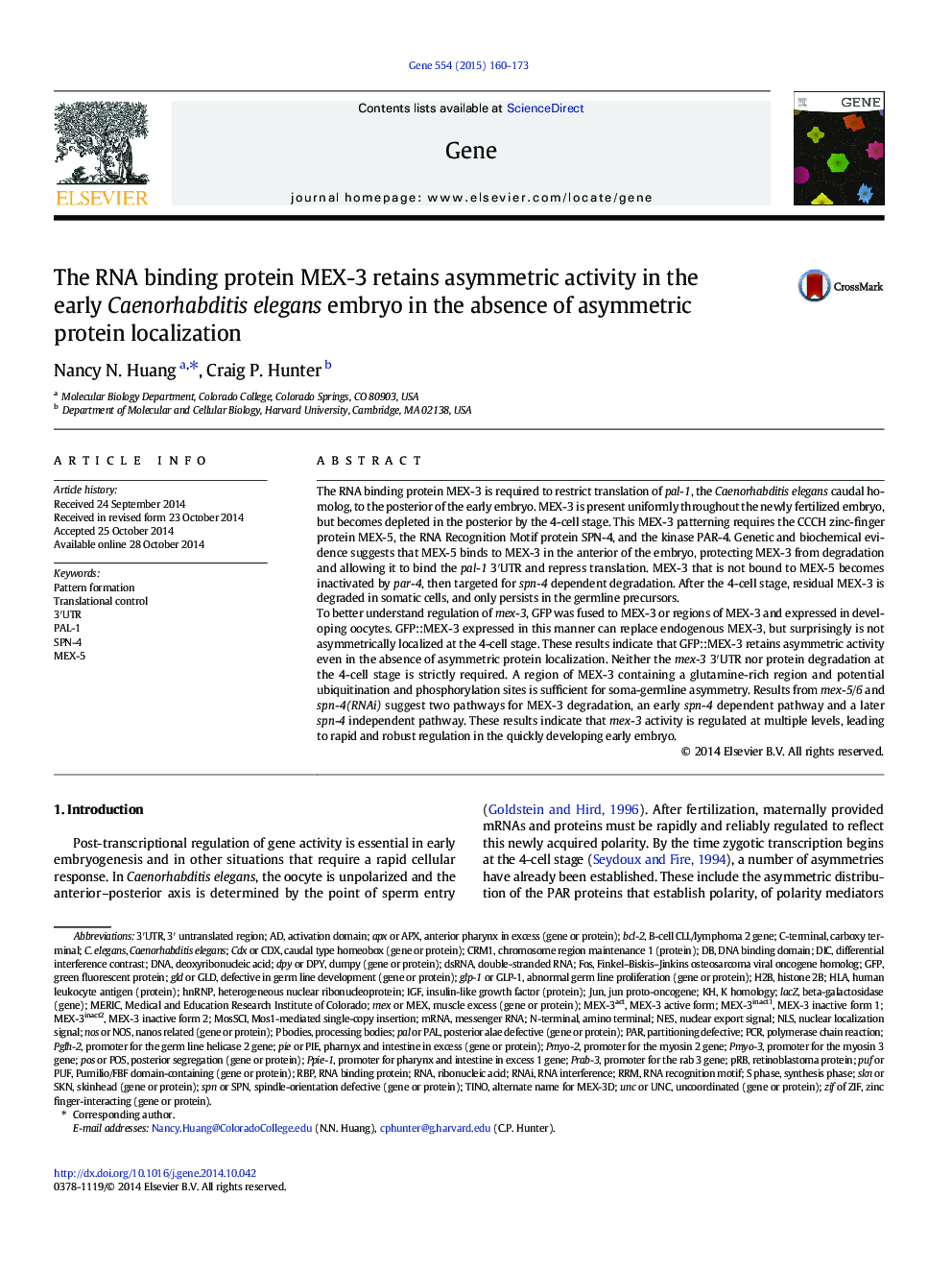| کد مقاله | کد نشریه | سال انتشار | مقاله انگلیسی | نسخه تمام متن |
|---|---|---|---|---|
| 2816050 | 1159912 | 2015 | 14 صفحه PDF | دانلود رایگان |

• MEX-3 shows early anterior–posterior asymmetry, and later soma-germline asymmetry.
• GFP::MEX-3 localization is symmetric in early embryo, but activity is asymmetric.
• The C terminus of MEX-3 is sufficient for soma-germline asymmetry.
• Degradation of MEX-3 in the posterior of the early embryo is dependent on spn-4.
• Degradation of MEX-3 in the soma of older embryos is independent of spn-4.
The RNA binding protein MEX-3 is required to restrict translation of pal-1, the Caenorhabditis elegans caudal homolog, to the posterior of the early embryo. MEX-3 is present uniformly throughout the newly fertilized embryo, but becomes depleted in the posterior by the 4-cell stage. This MEX-3 patterning requires the CCCH zinc-finger protein MEX-5, the RNA Recognition Motif protein SPN-4, and the kinase PAR-4. Genetic and biochemical evidence suggests that MEX-5 binds to MEX-3 in the anterior of the embryo, protecting MEX-3 from degradation and allowing it to bind the pal-1 3′UTR and repress translation. MEX-3 that is not bound to MEX-5 becomes inactivated by par-4, then targeted for spn-4 dependent degradation. After the 4-cell stage, residual MEX-3 is degraded in somatic cells, and only persists in the germline precursors.To better understand regulation of mex-3, GFP was fused to MEX-3 or regions of MEX-3 and expressed in developing oocytes. GFP::MEX-3 expressed in this manner can replace endogenous MEX-3, but surprisingly is not asymmetrically localized at the 4-cell stage. These results indicate that GFP::MEX-3 retains asymmetric activity even in the absence of asymmetric protein localization. Neither the mex-3 3′UTR nor protein degradation at the 4-cell stage is strictly required. A region of MEX-3 containing a glutamine-rich region and potential ubiquitination and phosphorylation sites is sufficient for soma-germline asymmetry. Results from mex-5/6 and spn-4(RNAi) suggest two pathways for MEX-3 degradation, an early spn-4 dependent pathway and a later spn-4 independent pathway. These results indicate that mex-3 activity is regulated at multiple levels, leading to rapid and robust regulation in the quickly developing early embryo.
Figure optionsDownload high-quality image (119 K)Download as PowerPoint slide
Journal: Gene - Volume 554, Issue 2, 10 January 2015, Pages 160–173